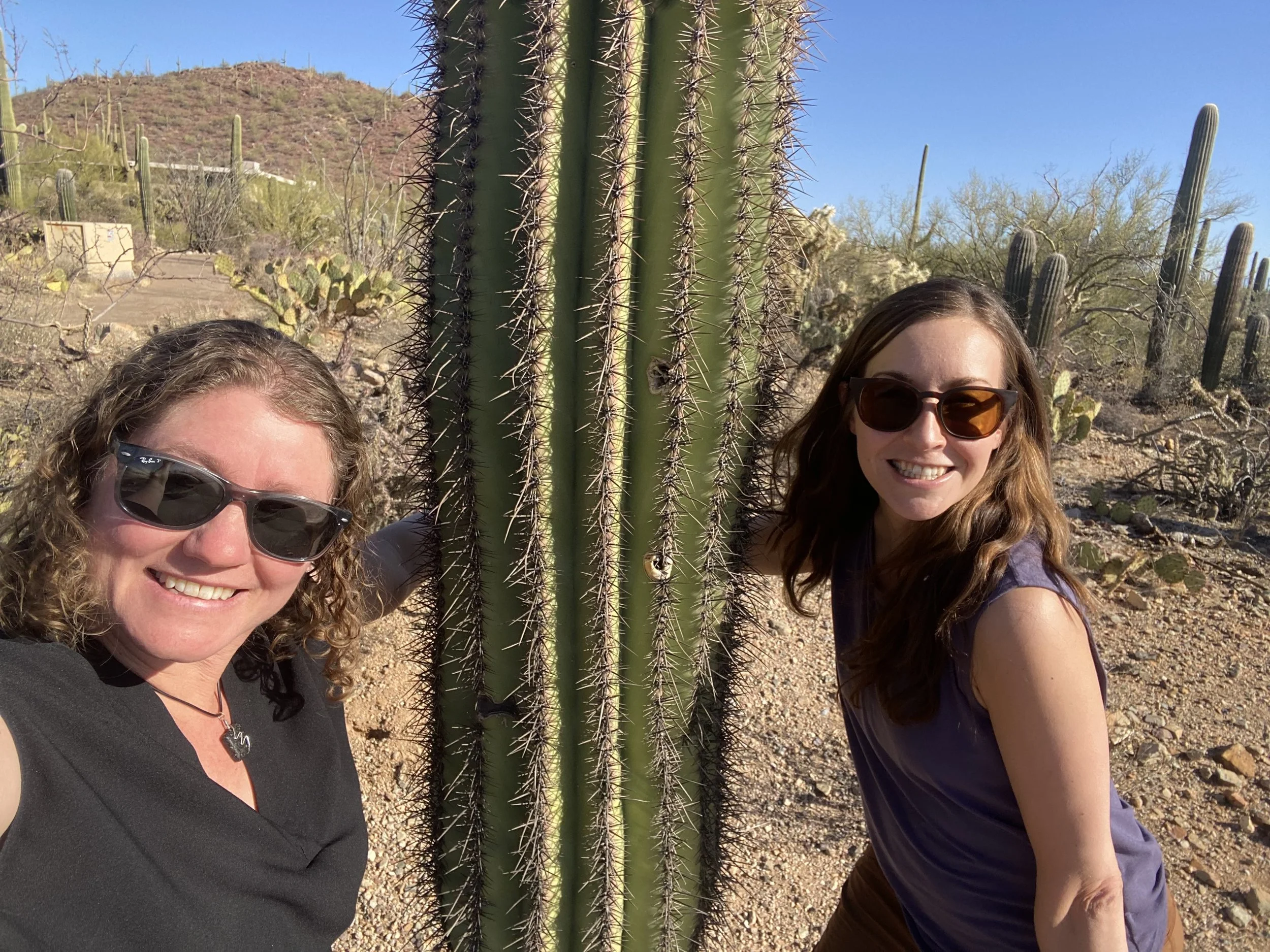Saguaro-Huggers Unite!
Drs. Sara Souther and Clare Aslan hugging a saguaro!
Clare and I are in sunny Tucson, soaking up the desert vibes with the Smith Fellows and leading workshops on fire resilience. But no trip to the Sonoran Desert would be complete without a stop at Saguaro National Park for our favorite pastime—Saguaro hugging!
These towering giants of the desert provide food and shelter for countless species, standing as icons of resilience in this arid landscape. And speaking of desert dwellers, check out this video of Arizona’s state bird, the Cactus Wren, perching on an ocotillo—a trusty desert companion to the Saguaro.
A Cactus Wren perched on top of an Ocotillo.
Stop - Cactus time!
Slow and Steady Growth – Saguaros grow very slowly, often taking 10 years to reach just 1 inch tall! A full-grown Saguaro (40+ feet) can be over 150 years old.
Water Hoarders – These cacti can absorb and store thousands of gallons of water during rare desert rains, expanding like an accordion. A large Saguaro can weigh over 4,000 pounds when fully hydrated!
Arm Mysteries – Saguaros don’t start growing arms until they’re around 50-75 years old, but some never grow them at all! Scientists still don’t fully understand why some remain “lone soldiers” while others sprout multiple limbs.
Cactus Hotels – Gila woodpeckers carve out holes in Saguaros, creating “boot nests” that later become cozy homes for elf owls, kestrels, and other desert birds.
Fruit Feast – Their ruby-red fruit ripens in June and was an essential food source for the Tohono O’odham people, who traditionally harvest and ferment it into a ceremonial drink. Each fruit contains about 2,000 tiny seeds, fueling desert biodiversity.
Cactus Skeletons? – After a Saguaro dies, its woody, rib-like internal structure remains standing for decades, providing habitat for animals and serving as an eerie reminder of its past grandeur.
Legal Protection – It’s illegal to remove or damage a Saguaro in Arizona without a permit, even if it’s on private land. These cacti are protected by state law, given their long lifespan and importance to desert ecosystems.
Flower Power – The Saguaro has one of the largest blooms of any cactus in the U.S., producing creamy white flowers with a sweet fragrance. A common misconception is that Saguaro flowers only bloom at night because they were historically pollinated by bats. However, Saguaro flowers are open through much of the day in Arizona and there is some evidence that their flowering window has expanded to incorporate daylight hours because nectar-feeding bats have become quite rare in the southwestern US, leading to substantial pollination by day-visiting birds and bees. This change would represent an example of rapid adaptation.
Fire and Climate Threats – While adult Saguaros are drought-adapted, invasive grasses like buffelgrass fuel wildfires, which can kill entire populations since these cacti aren’t fire-resistant. Fire management in Saguaro habitat is a growing conservation concern.
The National Park Connection – Saguaro National Park is unique because it’s split into two districts, east and west of Tucson. Each area has different elevations and ecosystems, creating two slightly different Saguaro landscapes.
You said it, brother—it’s always a good day to hug a cactus! 🌵
